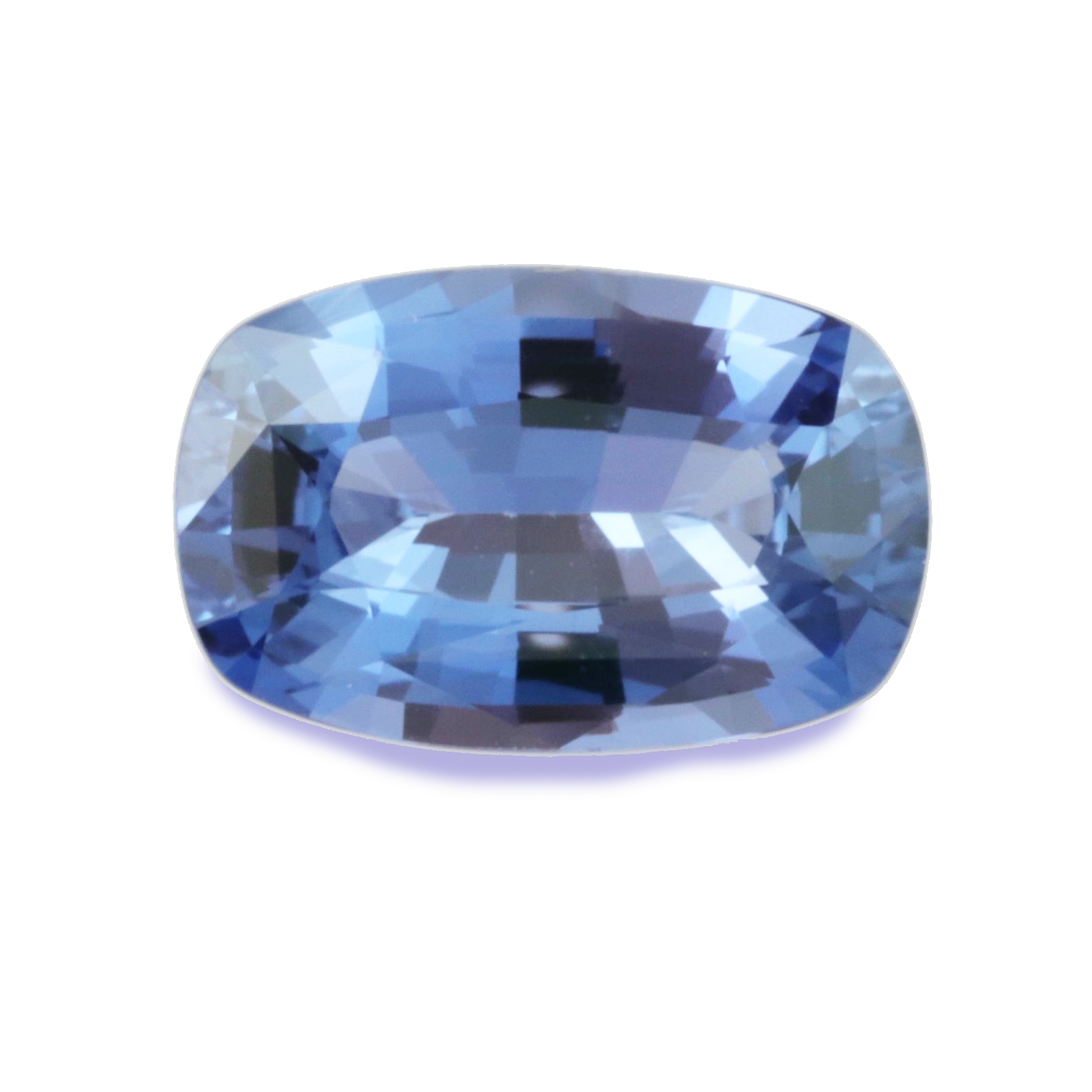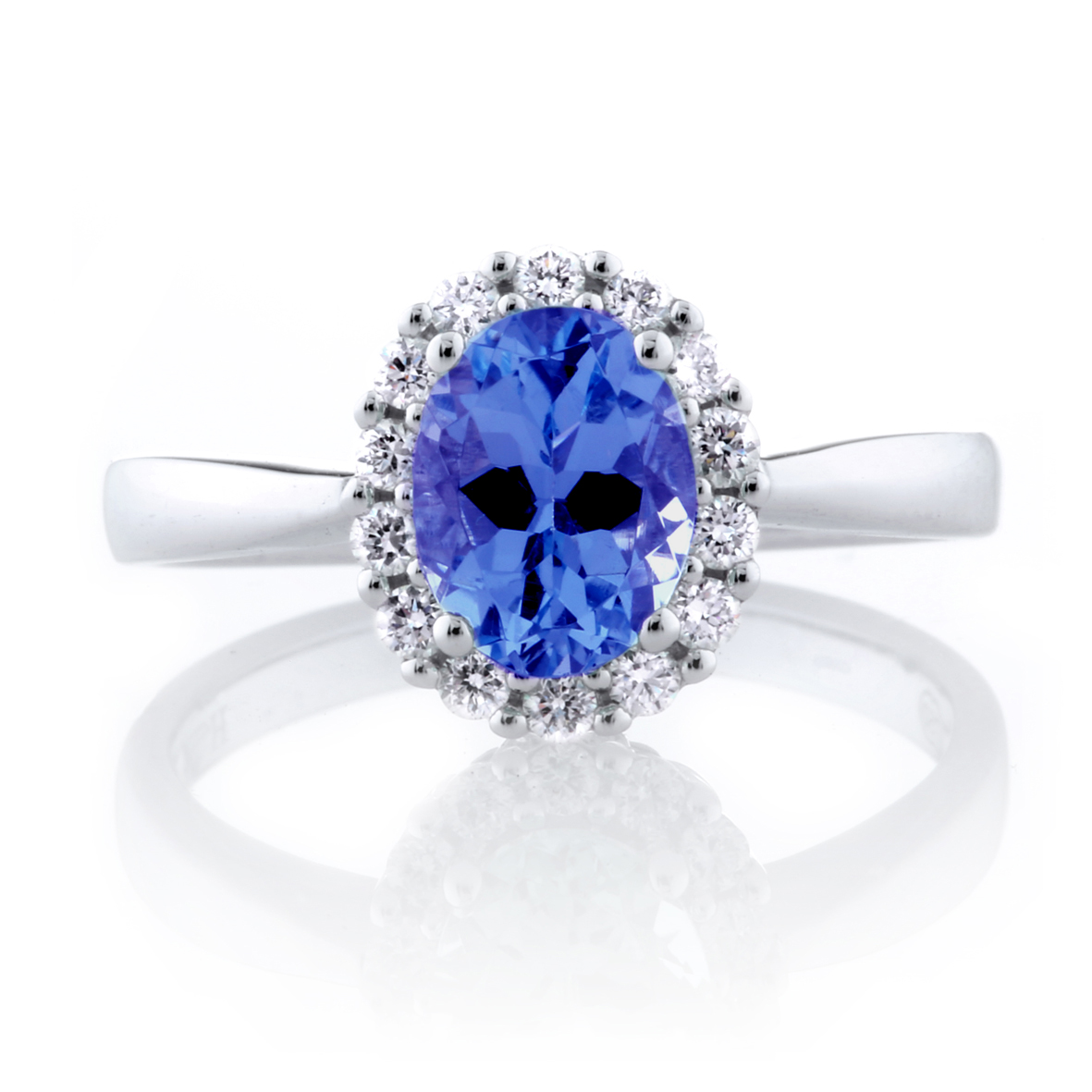Blue Sapphire
Blue sapphire are by far the most well known of the sapphire family. Blue Sapphires are part of the mineral group known as corundum and are found around the world with the most important deposits including Australia, Sri Lanka and Madagascar. Other well known deposits (some non producing today) include Kashmir, Montana, Burma, Tanzania and China.
Blue sapphires tend to vary in colour depending on their origin though there is vast overlap. Australia tends to be known for its black, inky and royal blue colours. Madagascar and Sri Lanka for their rich electric through to steel blue.

Loose Blue Sapphires
We have a large range of sapphires in stock at any one time. Many are loose and you can help design your own jewellery, but also many are already made up in to stunning jewellery. Come in to any of our stores to have a look!
4.11ct $30000
3.72ct $8400
2.05ct $3450
1.61ct $5150
1.54ct $3950
1.26 $1900
Blue Sapphire Jewellery
Facts and Lore
| Mineral \ | Corundum |
| Hardness \ | 9 |
| Lustre \ | Vitreous |
| Cause of Colour \ | Transition Iron, Titanium |
| Density \ | 3.98 – 4.06 |
| Birthstone \ | September |
| Wedding Anniversary \ | 45th & 65th |
The word sapphire originates in French, Latin, Greek and Hebrew and has been a historically significant gemstone for thousands of years. In its most pure form sapphire is perfectly colourless but takes on transitional elements during formation to give it various tones of colour – blue being the most common.
Sapphire is commonly synthesied in a number of common techniques and is often used for commercial purposes like watch glasses, coatings to increase durability of products and in electronics. Synthetic sapphire for jewellery is very inexpensive and has been used for a century.
Blue sapphires are prized for their vivid blue colour and the most exquisite examples are a straight blue (with no secondary overtones) hue with no eye visible inclusions, bright and well saturated. Unusual forms of sapphire like cats eyes, star sapphires, colour change sapphires and bi-coloured (parti-sapphires) are also found.
Frequently Asked Questions
Blue Sapphire Engagement Rings
In terms of popularity, the sapphire is second only to the diamond. Nothing complements the perfect engagement ring quite like a sapphire. While the blue sapphire is the most common colour variant, and many couples go for blue sapphire engagement rings, there are many questions about them that we are here to answer.
A sapphire is a gemstone made from corundum, a crystallised form of aluminium oxide. The blue colour commonly associated with sapphires comes from the concentration of certain minerals within the corundum, such as iron, titanium, vanadium and chromium. Blue sapphires come in various hues, shades and levels of saturation.
Can I get a sapphire engagement ring?
Blue sapphire engagement rings are a fairly common trend, serving as an alternative to the more traditional diamond engagement ring. Many notable celebrities have embraced blue sapphire engagement rings, the most notable of which being the 12-carat House of Garrard sapphire engagement ring that Prince William gave Kate Middleton, which previously belonged to the late Princess Diana.
Other celebrities with blue sapphire engagement rings include various actresses such as Victoria Beckham, Gwenyth Paltrow, Penelope Cruz, Elizabeth Hurley and Johanna Braddy.
What are blue sapphires used for?
Blue sapphires are used for all kinds of jewellery, from engagement rings to pendants to bracelets, as many find its strong blue hue to be aesthetically pleasing.
Additionally, corundum is extremely durable, allowing for the creation of synthetic sapphires that have alternative uses as components in windows, watches, barcode scanners, even body armour. Sapphires have even been used in the application of certain technologies including semiconducting circuits, body prosthetics and titanium lasers.
Not only are sapphires beautiful to look at, but they have practical applications that make them extremely valuable.
What are the benefits of wearing blue sapphire?
As previously mentioned, not only are blue sapphire engagement rings commonly associated with celebrities and nobility, but their high durability means they are extremely scratch resistant. However, in the unlikely event that sapphires do receive some scratches from extended wear, their common usage means that most jewellers can resurface them easily. There is also a wide variety of shades and hues with blue sapphire engagement rings, so there is an available ring no matter what shade of blue you’re looking for.
How much does a blue sapphire ring cost?
At Holdsworth Bros. our price range for blue sapphire rings is ticketed at approximately $1,100-$23,995 AUD. There are many different factors that influence the cost of a blue sapphire ring, such as:
- The shape of the gemstone (i.e. round, cut, etc.)
- The colour and shade of the gemstone
- Any accompanying gemstones
- The alloy of the band
- Any colour zoning
- Whether the gemstone has received “heat treatment” to bring out its colour
Which country’s blue sapphire is the most valuable?
Many countries export high quality sapphires:
- Australia
- China
- Kenya
- Madagascar
- Tanzania
- Thailand
- United States
- Vietnam
While each of them differ in value, the most valuable sapphires come from Kashmir, Burma and Sri Lanka. Notable examples of these sapphires are:
- The Bismarck Sapphire (98.56 carats)
- The Blue Belle of Asia (392.52 carats)
- The Logan Sapphire (422.99 carats)
- The Queen Marie of Romania (478.68 carats)
- The Star of Adam (1404.49 carats)
- The Stuart Sapphire (104 carats)
What is the most expensive blue sapphire?
The most expensive blue sapphire is the Blue Belle of Asia, a Burmese sapphire that sold for $17,305,996 at Christie’s Geneva in November of 2014. The dark blue untreated 392.52 carat cushion-cut sapphire centrepiece was accompanied by a necklace that had a gold base covered in oval-shaped diamonds. The gemstone itself has a colourful history, having changed hands multiple times since its discovery in 1926. It has sat in the private collection of renowned jewellers, British royalty and even Saudi collectors. Its current owner has not been identified.
How can I tell if my blue sapphire is real?
The easiest way to determine whether or not your blue sapphire is real is to purchase it from a reputable source, such as Holdsworth Bros. Jewellers.
There are many different types of synthetic, treated and imitation sapphire:
- An imitation sapphire is a material that is simply designed to look like sapphire, it may be glass or even a composite gem with real sapphire on the top but glass on the bottom.
- A synthetic, often called created, cultured, lab grown or man made sapphire has all the same chemical, optical and physical characteristics as its natural counterpart only is produced in exceptionally high numbers and has almost no commercial value.
- Sapphire is treated in many unacceptable ways, one of the most prolific currently is to take very light coloured natural sapphire and to dunk it in a bath of coloured molten glass. The colour from the bath leaches in to the very surface of the sapphire making it look a lot more colourful than it actually is. This treatment is called diffusion coating.
What to look for in a sapphire engagement ring
The large variety of shapes and colours with blue sapphires means that there is something for everyone. Personal preferences should always take precedence when selecting an engagement ring for that special someone. It’s better to find a ring that your significant other will cherish because it matches their sensibilities than a ring that commands a bigger price tag. With that in mind, it’s advisable to look for rings that showcase their gemstone adequately while also being comfortable to wear and not requiring constant maintenance.
How can you tell a good quality sapphire?
The best quality sapphires share the following traits:
- Colour that is as close to royal blue as possible (i.e. not too bright, not too dark). Also, sapphires that feature colour zoning (i.e. the colour fades into transparency instead of filling the entire gemstone) are of a lesser quality.
- Minimal visible inclusions. The less inclusions that are visible to the naked eye, the higher the quality of the gemstone. However, no inclusions at all could be a sign that the gem is fake, so be careful.
- Symmetrical cut sapphires command a higher asking price than asymmetrical gemstones.
Are dark blue sapphires valuable?
Dark blue sapphires are valuable, as they are precious gemstones. However they are sold for cheaper than their brighter, more saturated counterparts. Still, this fact should not deter anybody with a personal preference for darker gemstones. While they might not have the most compelling resale value, dark blue sapphires are nonetheless mesmerising and still make for beautiful engagement rings.
A notable example of a dark blue sapphire would be the blue-violet Star of Bombay, a cabochon-cut 182 carat gemstone that was given to silent film actress Mary Pickford by her husband Douglas Fairbanks, only to be bequeathed to the Smithsonian Institution in 1979.
How to care for a sapphire engagement ring
Sapphires are easy to care for, only requiring cleaning every six months or so. You will need warm water and any type of cleaning detergent that has degreasing properties (unless the ring has a silver alloy, as silver can react poorly to detergents). All you have to do is scrub the ring with a soft toothbrush and then rinse it thoroughly. However, avoid using any chemicals that contain moisturisers, abrasives or anti-static agents, as these can leave residue and, at worst, damage the metal band.
Are sapphire rings fragile?
Sapphires rank a 9 out of 10 on Mohs scale of hardness, a scale developed by German geologist and mineralogist Friedrich Mohs in 1812. Not only are sapphires extremely durable against abrasions, they are very chemical resistant as well.
Can you wear sapphire everyday?
Because sapphires are so durable, they present a very practical solution for engagement rings as they can be worn daily with a very low susceptibility to chips or scratches. While there are circumstances where it is advisable not to wear your ring (i.e. when showering), a blue sapphire engagement ring will survive the majority of everyday situations.
How do I style a sapphire ring?
At Holdsworth Bros. Jewellers, we’ll help you style your blue sapphire engagement ring however you want. Our promise is to provide you with the help you need to turn your vision into wearable jewellery that will be cherished for years to come.
Can I use diamonds and sapphires in the same design?
Despite the higher price tag it creates, many choose to combine blue sapphires with diamonds. Usually, the ideal design is to prominently feature a blue sapphire and then surround it with smaller diamonds.
Why are sapphires and diamonds a good match?
Because diamonds usually feature a neutral colour-palette, they create a contrast that accentuates the blue of the sapphire. Additionally, the diamonds fill in the otherwise plain space on an engagement ring band, giving the ring a fuller, more detailed look.
Still have questions? Contact us so we can show you the wide range of beautiful blue sapphire engagement rings that we have, and help you find the special ring for that special someone.


